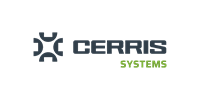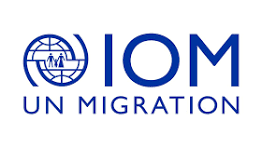
Building Healthcare That Endures

Build Health International (BHI) partnered with Symetri to transform how healthcare infrastructure is delivered in underserved regions. By adopting the Sustainable Integrated Digital Delivery (SIDD) Gold Service, BHI reduced project coordination time by 25%, unlocked 15% more funding, and embedded long-term resilience and sustainability into every facility. This case highlights how digital innovation and human-centered design can drive lasting impact in global health.
In many parts of the world, access to reliable healthcare infrastructure is far from guaranteed. A hospital may open its doors with hope and promise, but if it cannot withstand environmental pressures, operate affordably, or adapt to the needs of its community, it risks becoming just another building — rather than the foundation of a healthier future.
Build Health International (BHI) has long understood this challenge. Their mission extends beyond constructing clinics and hospitals; it’s about ensuring that these spaces remain resilient, sustainable, and impactful for decades to come. Because when infrastructure fails, it is patients, staff, and whole communities who pay the price.
Moving Beyond Short-Term Delivery
For organizations working in underserved regions, the urgency to deliver quickly is ever-present. Facilities must be built fast, often with constrained resources, to meet pressing needs. But speed can come at the expense of long-term performance.
BHI knew there had to be another way. They wanted healthcare facilities that could be delivered efficiently and built to last — balancing immediate delivery with long-term resilience and sustainability.
To achieve this, they partnered with Symetri to adopt the Sustainable Integrated Digital Delivery (SIDD) Gold Service, an advanced methodology developed through Symetri’s Co-Innovation Lab (COIL).
A Framework for Smarter Design and Delivery
SIDD Gold was created to give organizations like BHI a structured yet flexible framework that unites design, sustainability, and project delivery. It’s not a “bolt-on” service — it’s an integrated approach that changes how projects are conceived and delivered.
For BHI, the framework provided:
- Early clarity on the carbon and cost impacts of design choices, before commitments were locked in.
- Scenario testing to explore materials, assemblies, and layouts that balanced affordability with resilience.
- Data-backed transparency to build confidence with funders and stakeholders, showing that sustainability and practicality can coexist.
- Streamlined collaboration across global teams, cutting project coordination time by an estimated 25%.
Instead of asking, “What can we build fastest?”, BHI’s teams could now ask, “What will serve this community best — today, and 30 years from now?”
Building Trust, Unlocking Impact
This was as much about confidence as it was about carbon.
For donors and funding partners, it provided assurance that projects weren’t just well-intentioned — they were designed with measurable, verifiable outcomes. In fact, by embedding transparent carbon and cost metrics, BHI was able to unlock an estimated 15% more in funding support, giving backers confidence in both immediate delivery and long-term viability.
For healthcare staff, it meant facilities designed to support them, not hinder them — with spaces optimized for patient flow, ventilation, and resilience.
And for the communities BHI serves, it offered something priceless: the promise of enduring healthcare they can rely on.
By embedding sustainability at the heart of delivery, BHI transformed the narrative: sustainability was no longer a trade-off, but a lever for trust, funding, and resilience.
A Blueprint for the Future
This collaboration is more than one success story. It’s a blueprint for the future of healthcare infrastructure.
BHI has shown how digital innovation and human-centered design can align — delivering facilities that are affordable to operate, resilient against environmental pressures, and built for the long term. Early pilots have already demonstrated potential carbon savings of up to 20%, proving that even in constrained contexts, sustainability and impact can move together.
For Symetri Co-Innovation Lab, it reinforces the mission: to bridge innovation with impact, proving that when technology and purpose come together, the results can transform not just projects, but lives.
Closing Thought
BHI’s journey with Sustainable Integrated Digital Delivery (SIDD) Gold is a reminder that the real measure of infrastructure isn’t how fast it’s built, but how well it serves the people who depend on it. Together, BHI and Symetri have shown that healthcare facilities can be delivered quickly, operated sustainably, and trusted for generations.
Related Cases


Innovating Software Leads to Partnerships for a Global Impact
Every year there are millions of people who become displaced from their homes due to wars, conflicts, environmental impacts, and political unrest. The International Organization for Migration (IOM) is an organization within the United Nations, who... Learn more




